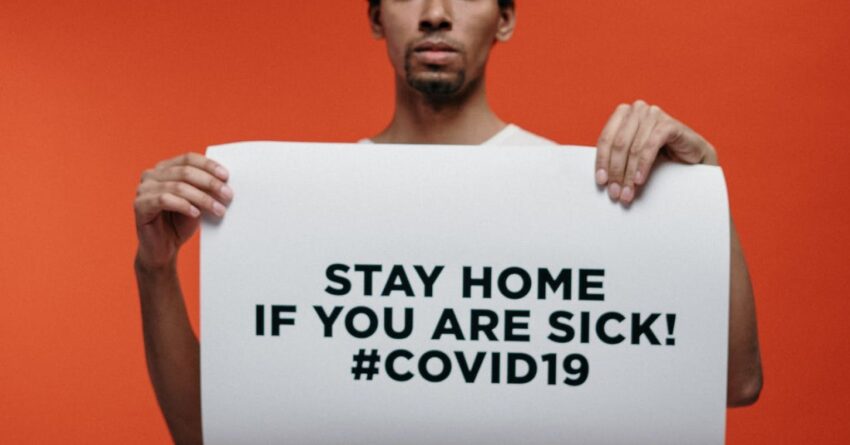
Eric Elter / Unsplash
By Robert M. Gordon, Psy.D., and Elizabeth Malkin, MA, MSCP
In the past 3 ½ years, we have experienced an incomprehensible level of unprocessed grief and loss over the number of people who have died due to COVID-19. Many individuals helplessly witnessed loved ones die alone in hospitals and nursing homes without the normal healing mourning rituals. Imagining the enormity of these losses is “like looking directly into the sun for too long; although the image persists, one must nonetheless turn away for protection” (Gensler et al., 2002, p. 96).
Without exception, all of us have experienced tangible loss during the pandemic. Some lost families, homes, and jobs, while others lost their hopes, sense of control, security in the world, and the belief that good things happen to people who are deserving (Boss, 1999; McWilliams, 2021; Rappoport et al., 2023). This experience of loss and unpredictability has been further compounded by recent global events, such as the war in Gaza, which exacerbate existential fears involving death, anxiety, and helplessness.
Comparison With 9/11 and the 1918 Spanish Flu
While the COVID-19 pandemic feels unprecedented and without comparison, we can gain perspective by contrasting it with other national traumas, such as 9/11 and the 1918 Spanish flu. History has shown us that in times of fear and crisis, people seek to identify a clear adversary.
For 9/11, the image of the Twin Towers was burned in people’s minds, and a “clear enemy” was defined, and thus an anchor for people’s fear, rage, and vengeance.
Similarly, in 1918, Spain was blamed for the flu because it was the first to report enormous numbers of deaths (Alpert et al., 2023). With COVID-19, some ethnic groups (e.g., Asians/Chinese) faced backlash due to the origins of the virus, resulting in collective trauma for that community. In times of collective trauma, individuals typically gather together to provide psychological support and protection. During the pandemic, however, we were told to do the opposite, increasing feelings of loneliness and fear (Gordon et al., 2020).
Alpert et al. (2023) wrote that during the 1918 Spanish flu, the United States dissociated feelings of helplessness, pain, suffering, and loneliness that were associated with the loss of 675,000 lives in the country and 50 million people worldwide, replacing these feelings with the manic enthusiasm of the Roaring Twenties. Similarly, we have become dissociated from the impact of losing over one million Americans to COVID-19.
Bromberg (1994) described the mechanism of dissociation as a defense against overwhelming anxiety, resulting in fragmentation. Perhaps this is why, during the 1918 Spanish flu, there was a great deal of political polarization, anti-masking groups, and misinformation about the disease, which have been echoed in the COVID-19 pandemic (Alpert et al., 2023).
Individual Grief vs. Collective Grief
Whereas individual grief involves the process of bereavement for personal loss, collective grief reflects an emotional impact on a communal level (Kumar, 2023). Collective traumas involve cataclysmic events impacting society as a whole (Hirschberger, 2018). Deaths on a mass level can be particularly distressing and create an “overflow of grief,” drowning out the ability to cope effectively.
Community-based interventions are most effective for addressing collective grief (Kumar, 2023). Initiatives often involve professionals like medical staff, police, and volunteers providing psychological first aid, which aims to meet basic needs, alleviate distress, and reinforce individual strengths and coping skills. Additionally, community leaders and media are critical in effectively disseminating information, ensuring public awareness, and guiding appropriate actions.
The aftermath of collective grief provides the opportunity to reflect and discover lessons learned to ensure systems are put in place to provide compassionate care and reestablish a sense of community and equity (Reneau & Eanes, 2022). Effective trauma processing allows collective trauma to be turned into a collective memory, ultimately creating a collective meaning (Hirschberger, 2018).
Grasping the full impact of COVID-19 involves recognizing that the collective memory it creates extends beyond those directly affected, enduring, and evolving for future generations. Collective trauma marks a point of no return (Herman, 1992; Hirschberger, 2018).
Healthcare Professionals Responding to Collective Grief of COVID-19
At the pandemic’s peak, healthcare professionals faced unprecedented collective grief, bearing witness to patients’ last moments in solitude at an extraordinary rate (Ansari, 2022). Strikingly, these patients often met the end alone, without the presence of family to offer solace. Medical professionals stepped in to fill roles as sole social supports, caregivers, and hands being held at the end.
This situation highlighted a striking irony: The shared experience of grief was profoundly individual, as patients, family members, and healthcare workers experienced it in isolation. The strength that typically comes from social support systems was inaccessible and inadvisable, and the effects of this are still being felt to this day.
Tips to Deal With Unprocessed Grief and Loss
To process the incomprehensible and deeply wounding losses from COVID-19, the following tips are suggested to begin processing the underlying grief:
- Acknowledge that collective loss has happened and talk to trusted others about individual losses.
- Utilize self-reflective questions such as, “What are my feelings of loss, uncertainty, and vulnerability teaching me?”
- Examine your underlying assumptions about the world that may be impacting your ability to grieve (e.g., “there is a reason for everything that happens”) (Janoff-Bulman, 1992).
- Explore how regret, guilt, and shame may drain your coping skills and reduce your flexibility in dealing with the mourning process (Buechler, 2019).
- Consider ways of memorializing, writing about, or honoring loved ones, including living out their values and the causes they believed in and exploring how their good qualities have changed you (Kessler, 2019).
Concluding Thoughts
Trying to avoid collective grief and loss is like living apart from humanity. Instead of helping us heal, avoiding grief and loss can lead to feelings of indifference, numbness, and lack of meaning. Effective processing of grief and personal loss allows one to free up the energy and inner resources to feel hope. “Hope is a choice and gift we give to each other” (Burger, 2018, p. 186) and an anchor for the soul.
Robert M. Gordon, Psy.D., is a Clinical Associate Professor at the NYU Grossman School of Medicine. He is a member of the Medicine & Addictions workgroup that sponsors this post.
Elizabeth L. Malkin, MA, MSCP, is completing her doctorate in clinical psychology at the Illinois School of Professional Psychology at National Louis University. She is currently a predoctoral intern at NYU Langone Health-Rusk Rehabilitation.
